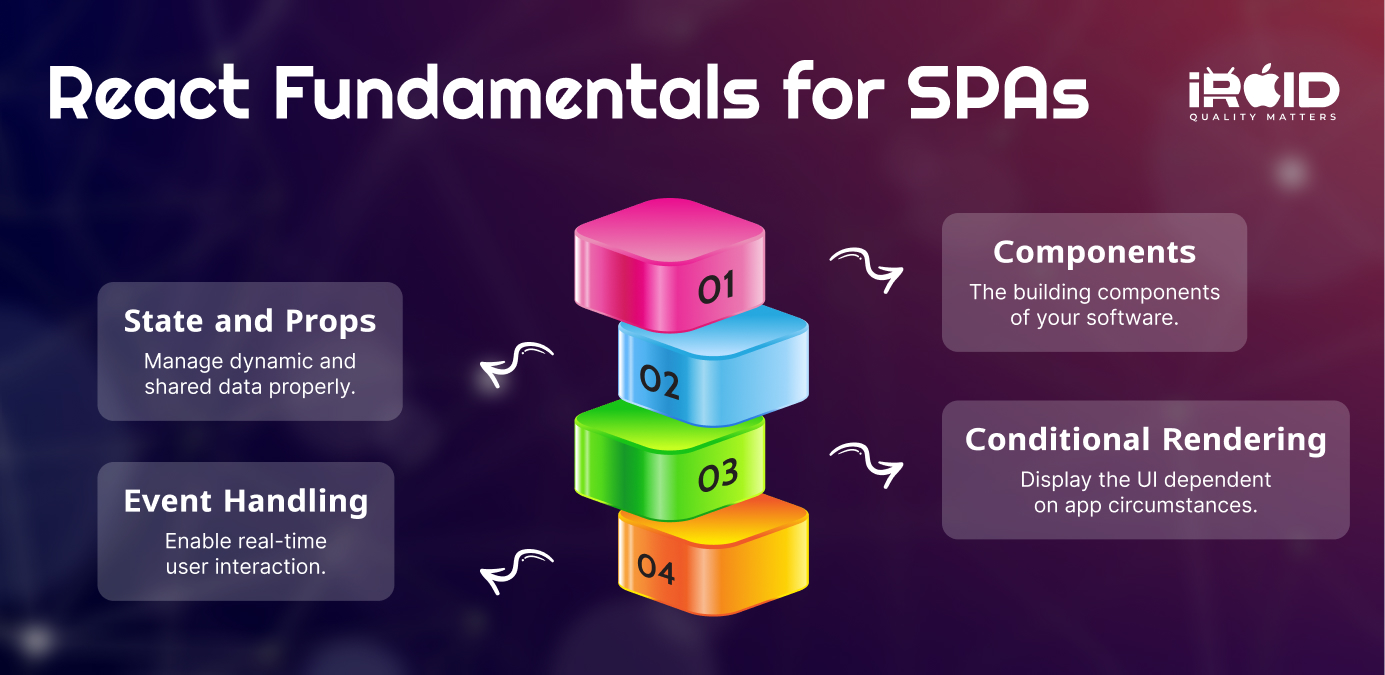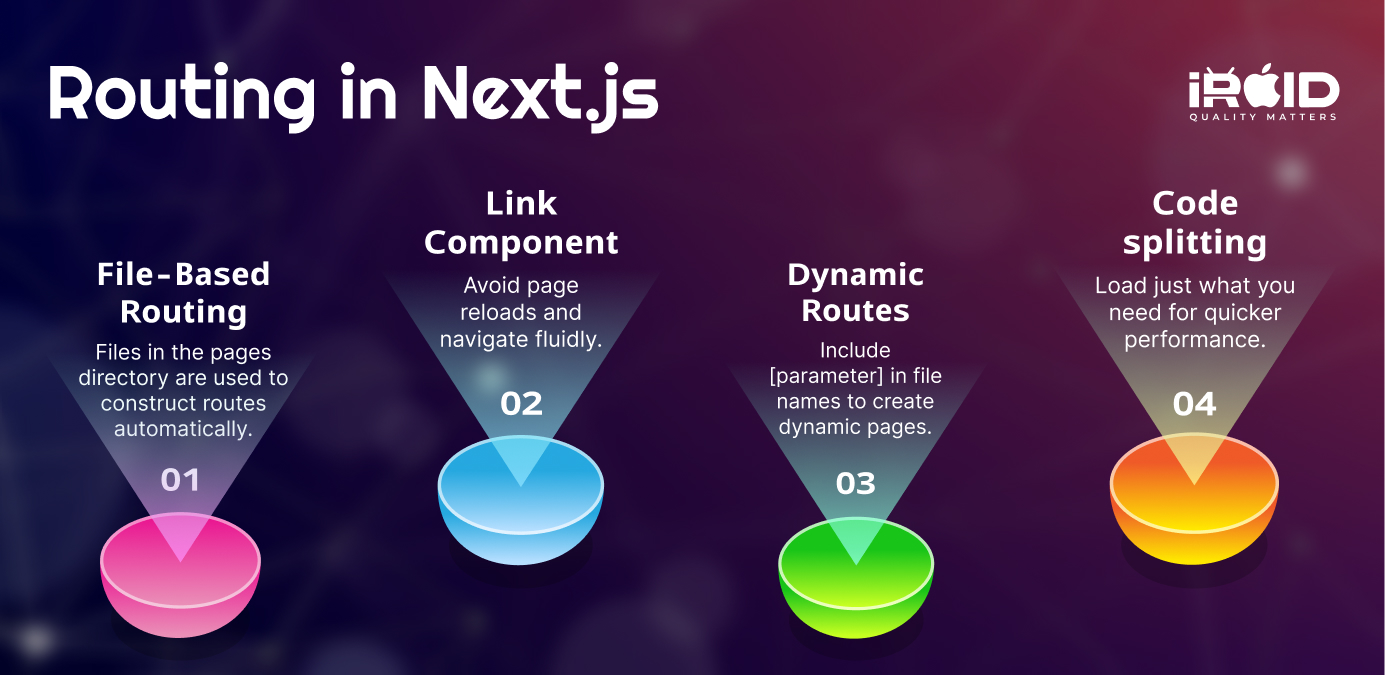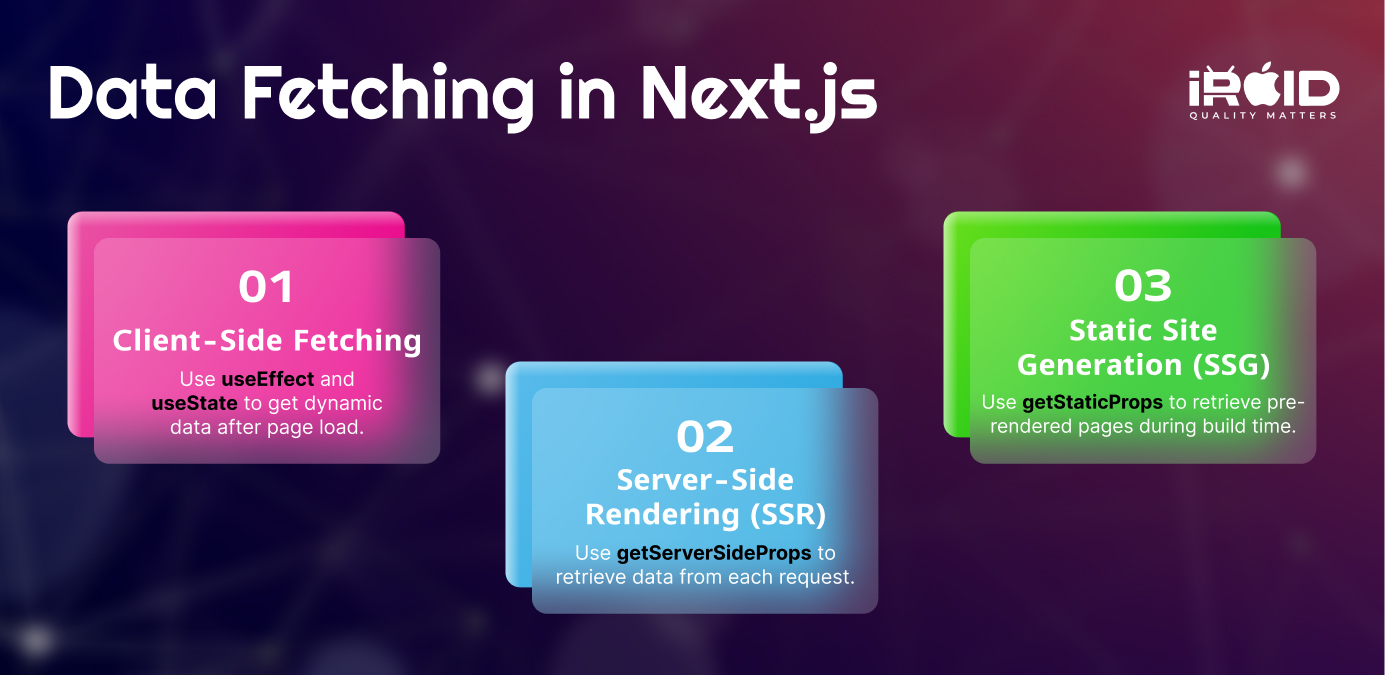Introduction
Single-page applications (SPAs) have become increasingly popular in web development due to their speed, user experience, and interactivity. In this guide, we will explore how to build SPAs using React and Next.js, two powerful tools that make SPA development more efficient and enjoyable.
Setting Up the Development Environment
Before diving into building SPAs with React and Next.js, we need to set up our development environment. The first step is to install Node.js and npm (Node Package Manager), which will allow us to manage dependencies and build our applications with ease. Once Node.js and npm are installed, we can create a new Next.js project using the command `npx create-next-app`. This command sets up a basic project structure for us, giving us a head start in building our SPA.
React Fundamentals for SPAs

React is a JavaScript library that serves as the foundation for building SPAs. It allows us to create reusable UI components, manage application state, and handle user interactions effectively. In this section, we will explore React fundamentals that are essential for building SPAs.
Components as Building Blocks
React follows a component-based architecture, wherein we can break down our application into smaller, reusable components. By dividing our application into components, we can promote code reusability and maintainability. Components can be as simple as a button or as complex as an entire page.
State and Props for Managing Data
State and props are two crucial concepts in React that allow us to manage data within our components. State represents data that can change over time, such as user input or API responses. Props, on the other hand, are a way to pass data from a parent component to its child components. By leveraging state and props effectively, we can create dynamic and interactive SPAs.
Conditional Rendering and Lifecycle Methods
Conditional rendering is a powerful feature in React that allows us to display different UI components based on certain conditions. It enables us to create dynamic user interfaces that respond to user actions or application state changes. Additionally, React provides a set of lifecycle methods that allow us to control the behaviour of our components at different stages of their lifecycle, such as component mounting, updating, and unmounting.
Event Handling for User Interactions
React makes it easy to handle user interactions, such as button clicks or form submissions. With React's event system, we can attach event handlers to our components and perform actions based on user input. This enables us to create interactive SPAs that respond to user actions in real-time.
Routing in Next.js

Next.js provides powerful routing capabilities out of the box, making it easier to build SPAs with multiple pages. In this section, we will explore routing in Next.js and how it simplifies the navigation between different pages.
File-Based Routing with the Pages Directory
Next.js uses a file-based routing approach, where each file in the `pages` directory represents a unique route in our application. By organising our pages as files within this directory, Next.js automatically sets up the routes for us. For example, a file named `about.js` in the `pages` directory will create the route `/about` in our application.
Dynamic Routes with Parameters
Next.js also supports dynamic routes, allowing us to create routes with parameters. This is useful when we want to create dynamic pages that can load different content based on the provided parameters. Next.js provides a flexible way to define dynamic routes using square brackets, such as `/posts/[id]`, where `id` can be any value.
Link Components for Navigation
Next.js provides a `Link` component that simplifies navigation between different pages in our SPA. By using the `Link` component, we can create clickable links that update the URL without triggering a full page reload. This improves the user experience and makes our application feel more like a traditional website.
Code-Splitting for Optimization
Code-splitting is an optimization technique that allows us to split our JavaScript code into smaller chunks and load them on demand. Next.js automatically performs code-splitting, ensuring that only the necessary code is loaded when a user visits a specific page. This improves the initial loading time of our SPA and enhances the overall performance.
Data Fetching

Fetching data is a common requirement in SPAs, whether it's retrieving data from an API or rendering server-rendered content. Next.js provides several approaches for data fetching, giving us flexibility and control over how we handle our application's data.
Client-Side Fetching with the use effect and state
For client-side data fetching, we can utilise React's `useEffect` and `useState` hooks. With these hooks, we can perform asynchronous operations, such as API requests, and update the component's state with the fetched data. This approach is suitable for scenarios where the data can be fetched after the initial page load.
Server-Side Rendering (SSR) with getServerSideProps
Next.js offers server-side rendering (SSR) capabilities through the `getServerSideProps` function. This function runs on the server for each incoming request and allows us to fetch data and pass it as props to our components. SSR is useful when we need to fetch data that is specific to each request or requires authentication.\
Static Site Generation (SSG) with getStaticProps
Static site generation (SSG) is another powerful feature provided by Next.js, enabling us to generate static HTML files at build time. The `getStaticProps` function allows us to fetch data during the build process and pre-render our pages as static files. This approach is suitable for scenarios where the data does not change frequently and can be pre-rendered.
Data Fetching Strategies and Considerations
Choosing the right data fetching strategy depends on the specific requirements of our SPA. We need to consider factors like data freshness, performance, and SEO implications. Next.js provides us with the flexibility to choose the most appropriate data fetching technique based on our application's needs.
State Management
As our SPA grows in complexity, managing the application state becomes a crucial aspect. In this section, we will explore different state management options available when building SPAs with React and Next.js.
Context API for Simple State Sharing
React's Context API provides a simple and lightweight way to share state between components. It allows us to define a shared state at the top level of our application and access it from any component within the component tree. Context API is suitable for smaller applications with a limited amount of shared state.
Redux for Complex Applications
Redux is a popular state management library that helps us manage complex application states with ease. It provides a centralized store that holds the entire state of our application and enables predictable state updates through actions and reducers. Redux is well-suited for large-scale applications with a significant amount of shared state and complex data flows.
Other State Management Options
Apart from Context API and Redux, there are other state management options available that cater to different requirements. Zustand, for example, is a minimalistic state management library that focuses on simplicity and performance. Recoil is another state management library developed by Facebook, designed specifically for managing large-scale states in React applications. Exploring these alternatives can help us find the right solution for our specific use case.
Styling
Styling our SPAs is an essential aspect of creating an engaging and visually appealing user interface. In this section, we will explore different approaches to styling our React and Next.js applications.
CSS Modules for Scoped Styles
CSS Modules is a CSS organization technique that allows us to write modular and scoped styles for our components. By leveraging CSS Modules, we can encapsulate styles within a specific component, preventing them from affecting other parts of our application. This helps maintain style consistency and avoids conflicts between different components.
Global CSS for Project-Wide Styles
Next.js provides support for global CSS styles, allowing us to define project-wide styles that apply to all pages. By creating a global CSS file and importing it in our application, we can ensure consistent styling across our SPA. This approach is useful for defining styles that need to be applied globally, such as a common layout or typography.
CSS-in-JS Libraries
CSS-in-JS libraries, such as styled-components and Emotion, offer an alternative approach to styling our SPAs. These libraries enable us to write CSS directly in our JavaScript code, encapsulating styles within our components. This approach provides flexibility and allows us to build reusable components with a cohesive styling solution.
Forms and Data Handling
Forms play a vital role in many SPAs, especially when it comes to user input and data submission. In this section, we will cover different techniques for handling forms and working with data in React and Next.js.
Form –-Handling in React
React provides a straightforward way to handle form submissions and user input through the use of controlled components. Controlled components store their state within the component and update it based on user input. By leveraging controlled components, we can easily capture form data and perform actions like validation and submission.
Validation and Error Handling
Validating user input is crucial to ensure the accuracy and integrity of the data submitted through our forms. React offers various validation techniques, such as conditional rendering and error messages, to provide users with meaningful feedback. Proper error handling is essential to guide users through the form submission process and improve the overall user experience.
Submitting Data to APIs
Once we have captured and validated form data, we often need to submit it to APIs or backend services. React and Next.js provide mechanisms for making API requests, such as the `fetch` API or third-party libraries like Axios. By leveraging these tools, we can easily send form data to a server and process it accordingly.
Deployment
Deploying our SPA to a hosting platform is the final step in making our application accessible to users. In this section, we will explore the process of building a production-ready application using React and Next.js, followed by deploying it to various hosting platforms.
Building the Production-Ready Application
Before deploying our application, we need to ensure that it is optimized for production. This involves bundling and minifying our JavaScript code, optimizing assets like images, and setting appropriate caching headers. Next.js provides built-in optimizations during the build process, making it easier to create production-ready SPAs.
Deploying to Various Hosting Platforms
Next.js plays well with a variety of hosting platforms, giving us flexibility in choosing the one that best suits our needs. Platforms like Vercel and Netlify provide seamless integration with Next.js, offering features like automatic deployments, SSL certificates, and domain management. By following their respective deployment guides, we can easily deploy our Next.js applications.
Best Practices
To ensure our SPAs are performant, accessible, and maintainable, it is essential to follow best practices. In this section, we will cover several best practices for building React and Next.js SPAs.
Performance Optimization Techniques
Performance is a critical aspect of any SPA. By following performance optimization techniques, such as code splitting, lazy loading, and image optimization, we can improve the initial load time and overall responsiveness of our application. Properly optimizing our SPAs ensures a smooth and enjoyable user experience.
Accessibility Considerations
Accessibility is often overlooked but plays a crucial role in building inclusive SPAs. By adhering to accessibility guidelines, such as providing alternative text for images, using semantic HTML, and keyboard navigation, we can ensure that our application is accessible to as many users as possible. Making our SPAs accessible is not only the right thing to do but also essential for reaching a wider audience.
Testing and Debugging Strategies
Thorough testing and effective debugging practices are essential for maintaining the quality of our SPAs. React and Next.js provide tools and libraries that facilitate testing and debugging, such as the React Testing Library and the Next.js development server. By adopting these strategies, we can catch and fix bugs early in the development process, ensuring a robust and reliable application.
Advanced Topics
In addition to the core concepts and best practices, there are several advanced topics that we can dive into when building SPAs with React and Next.js. These topics allow us to customize and extend the capabilities of our applications, making them even more powerful and flexible.
Customising the Next.js Build Process
Next.js provides a customisable build process that allows us to modify various aspects of our application, such as webpack configurations and asset optimization. By understanding the build process and its configuration options, we can tailor our Next.js applications to suit our specific needs.
Integrating with Third-Party Libraries
React and Next.js have vibrant ecosystems with various third-party libraries and packages. Integrating these libraries into our SPAs can greatly enhance their functionality and save development time. Whether it's a UI component library like Material-UI or a utility library like Moment.js, leveraging third-party solutions can supercharge our development process.
Using Serverless Functions for Backend Logic
Serverless functions provide a server-side solution that allows us to run code without managing infrastructure. Next.js supports serverless functions through the `API` directory, where we can define APIs and backend logic. By utilizing serverless functions, we can build dynamic and scalable SPAs that seamlessly integrate frontend and backend capabilities.
Creating Custom Data Fetching Solutions
While Next.js provides built-in data fetching strategies, there may be cases where we need to create custom solutions. This can include implementing GraphQL queries, using third-party libraries like SWR, or establishing real-time data connections through WebSockets. By creating custom data fetching solutions, we gain the flexibility to handle unique requirements and optimize performance.
Conclusion
In conclusion, harnessing the capabilities of React and Next.js proves to be a dynamic and efficient path for crafting high-performance SPAs. Whether you're a novice or a seasoned developer, delving into this guide's insights and best practices will empower you to create robust and feature-rich applications. Elevate your web development journey with iRoid Solutions, and should you have any inquiries or need assistance, feel free to reach out through our Contact Us page. Let's unlock the full potential of React and Next.js together!
Blog Related FAQs:
A Single-Page Application (SPA) is a type of web application that loads a single HTML page and dynamically updates as the user interacts with the app, providing a smoother and faster user experience.
React is a JavaScript library for building user interfaces with reusable components, while Next.js is a React framework that offers server-side rendering, file-based routing, and static site generation. Together, they simplify SPA development and improve performance.
React components are reusable, self-contained building blocks that represent parts of the UI. They help in breaking down the app into smaller, manageable pieces, making the code more maintainable and scalable.
Next.js uses file-based routing, where each file in the pages directory automatically creates a route. It also supports dynamic routing and allows navigation between pages using the Link component without reloading the page.
SSG generates static HTML pages during the build time and serves them to the client, while SSR renders content on the server for each incoming request, ensuring dynamic content.
SPAs can be styled using CSS Modules for scoped styles, global CSS for project-wide styles, or CSS-in-JS libraries like styled-components and Emotion, which allow writing CSS directly in JavaScript.
To deploy, optimize your app by bundling and minifying the code. Platforms like Vercel and Netlify provide seamless deployment for Next.js apps, offering automatic deployments, SSL certificates, and domain management.
Serverless functions allow backend logic to run without managing the infrastructure. In Next.js, serverless functions can be created in the API directory, enabling you to add dynamic server-side logic to your SPA.
Recent Blog Posts
Get in Touch With Us
If you are looking for a solid partner for your projects, send us an email. We'd love to talk to you!














